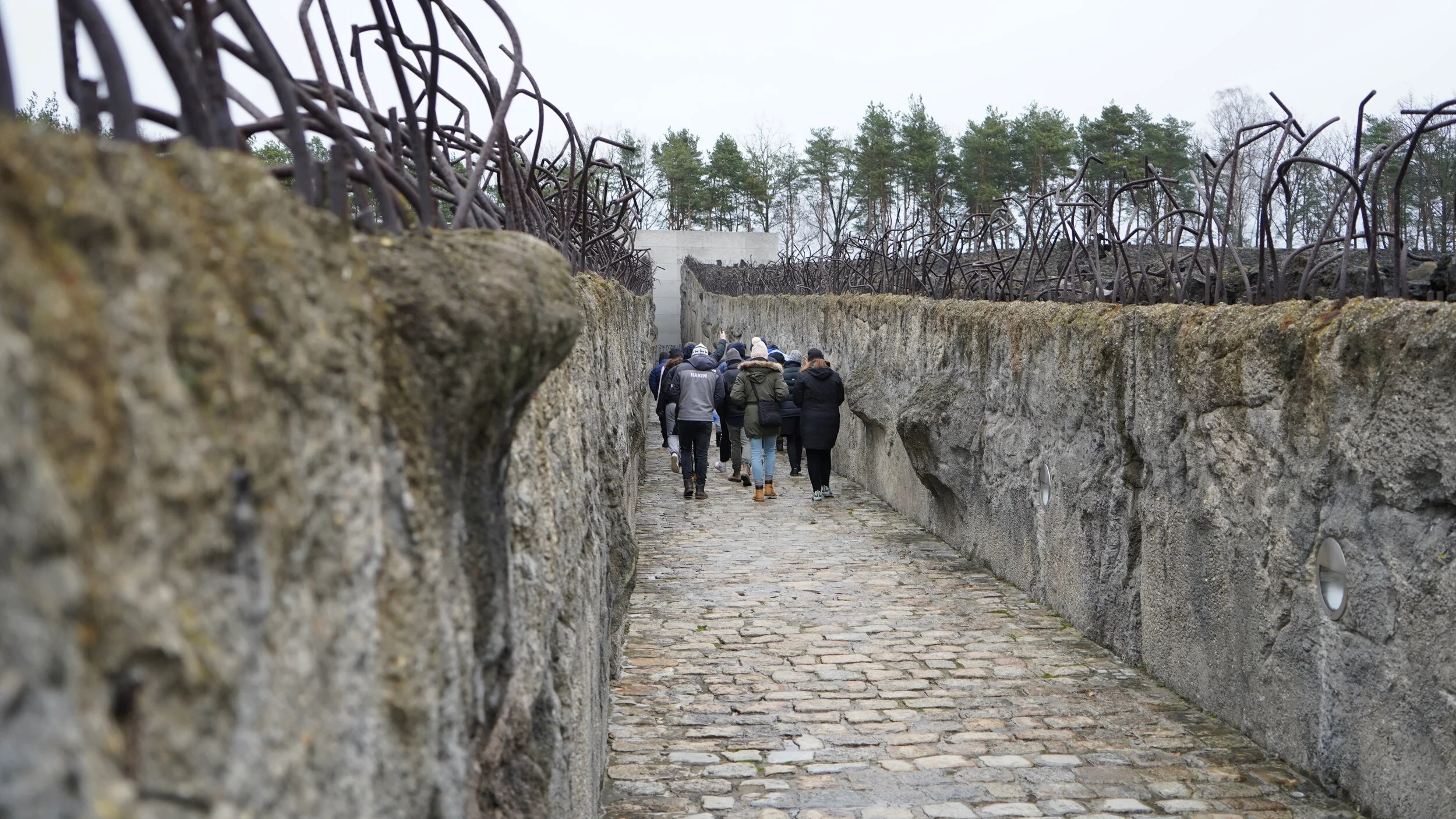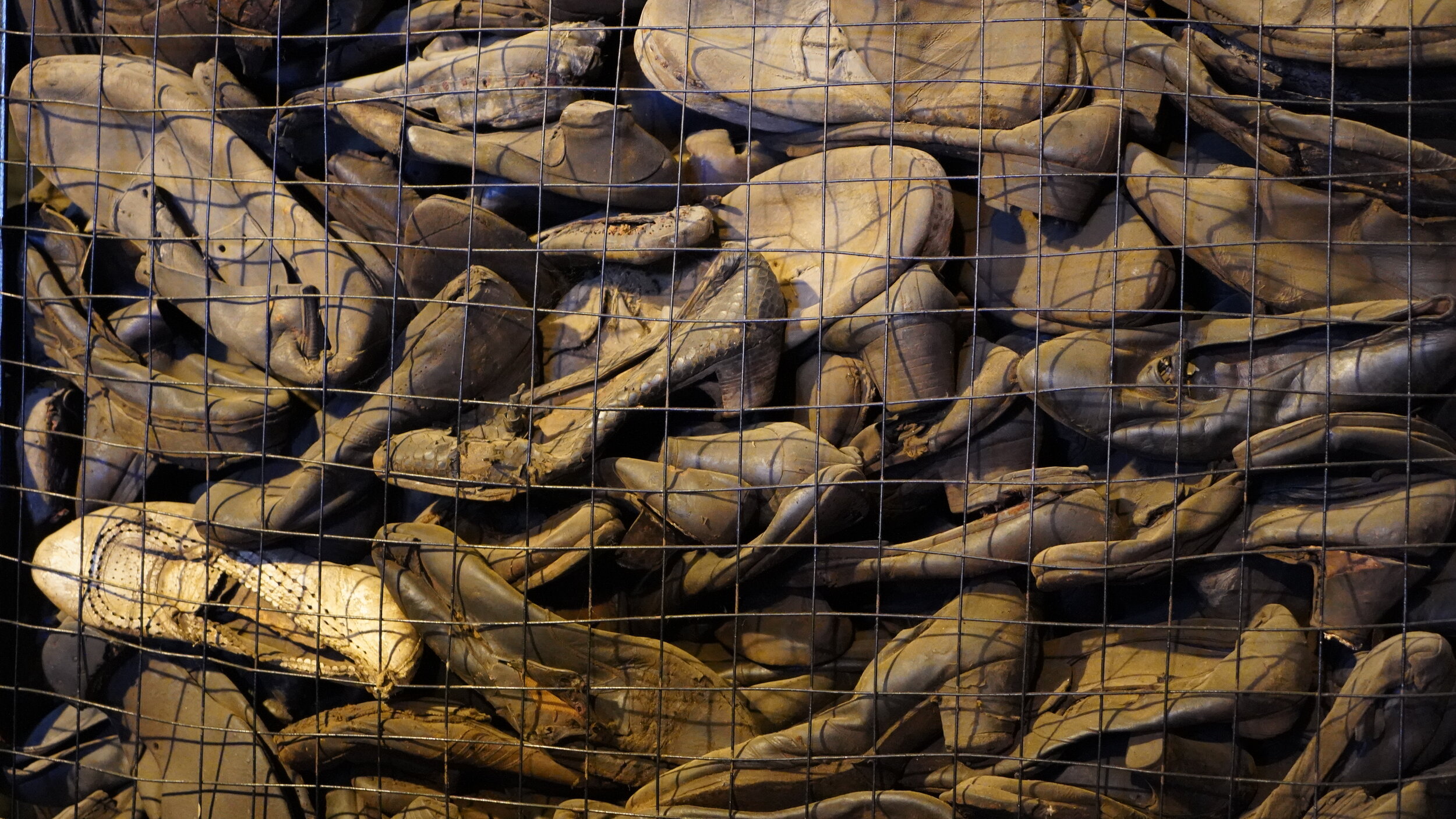Day 4 - Poland - Jessica
After what has already been an emotional and difficult few days in Poland, we woke up with a feeling of anticipation of what was still to come. After breakfast, we played the gratefulness game, and it was clear that our experiences in Poland have made us feel a deeper sense of gratitude for the lives we live.
After a few hours drive, we arrived at Belzec. A plaque at the entrance told us that we were walking into a place where approximately 500,000 Jews were murdered. Belzec was an extermination camp that was set up purely for the purpose of murdering the Jews of Eastern Europe. Unlike Majdenek which is in a well preserved manner, Belzec was completely flattened by the Nazis as the Soviet forces approached. Today, a memorial covers the perimeters where the camp stood with ashen black rocks of all different sizes. There are different interpretations to the design’s meaning which we discussed, but the one I found most touching is that each of the hundreds of thousands of rocks represent a person or a community that was shattered, and together, all the rocks represent the destruction caused. Reading the names engraved of the myriad communities from which Jews were taken allows you to grasp the enormity of it all and what devastation really means.
A long pathway cuts through the middle of the rocks, and leads to where the gas chambers once stood. As you walk down the pathway, the walls become taller and more imposing, making you feel more and more powerless. This symbolises the exact way the Jewish people felt as they walked down the very same path, to their death, becoming less hopeful with each step. But unlike the Jews in 1942, when we reached the end of the path, we were able to ascend back into the light and openness of the space. Something we did not take for granted, as we tried to comprehend the incomprehensible.
Our guide went on to share an interesting thought with the group, as he pointed out that Belzec is in the middle of nowhere, and is not as well known as other camps like Auschwitz and Majdenek. Yet surprisingly, its numbers are just as horrifying. The reason for this is that unlike the other camps, there were barely any survivors of Belzec. In fact, after being at the camp for just over 30 minutes, we were told that we had stayed there for longer than the average Jew did. Belzec was nothing more than a killing machine, and doesn’t even deserve the title of ‘camp’.
After an emotional walk through the memorial, we all met up as a year group in the museum, and went into a room called the ‘Contemplation Room’. It was a large, empty room with concrete walls and floors, and we formed a large circle and began to sing. The words echoed loudly around the room and we were able to bring so much life, and ruach, into a place that has a deeply rooted feeling of death.
Next, we went to a restaurant where we were greeted with a traditional polish meal of kugel. From there, we made our way to Lezansk, and visited the grave of Rabbi Elimelech, the third Rav of the Chasidic dynasty. People from all over the world visit this grave to pray for different things, as it’s considered good luck to pray at such sites where certain tzadikim are buried. We piled into the small room and immediately felt a spiritual connection standing in such a holy site, where we davened Mincha and sang in arms, together as one group.
One thing that really stood out to me today was a date on the wall at Belzec, 17/11/1942. It was the day that the transports started to arrive. The reason it struck me is because this exact date, the 17th of November, 77 years later, was the date we left Sydney and began our IST journey. I thought of how special it is that we are coming to a place that saw so much devastation and destruction for the Jewish People. A place where our entire existence was threatened by the most evil of humanity. Yet today we come back to remember those who were lost, and show that we are still here, surviving and strong. I felt more connected and proud to be Jewish than ever before, as we walked through the camp singing the same song the Jews sang on the way to their death all those years ago; ‘Even though I walk in the valley of the shadow of death, I fear no evil because you stand with me.’



